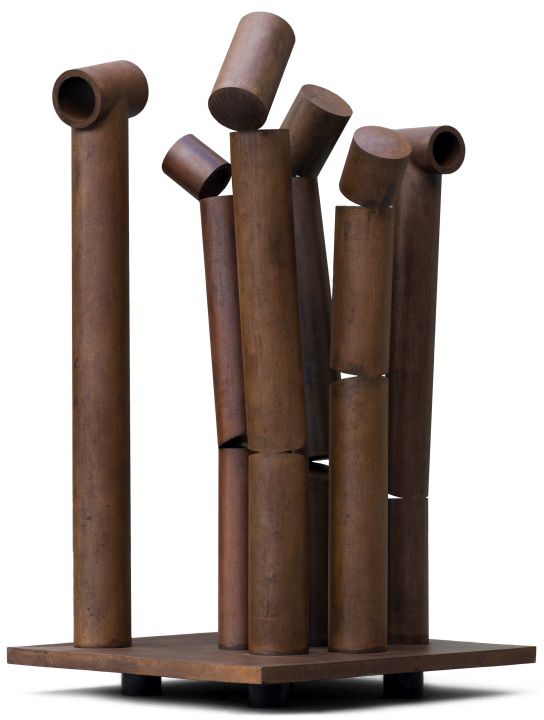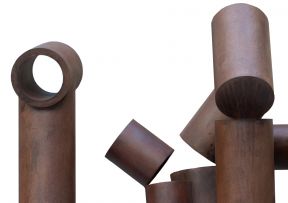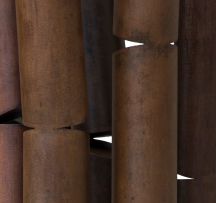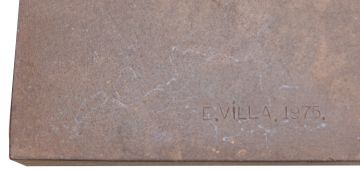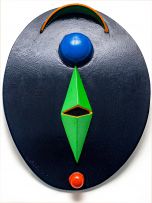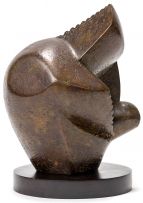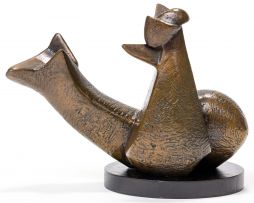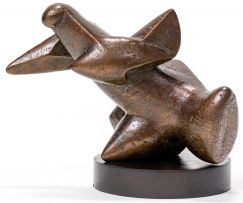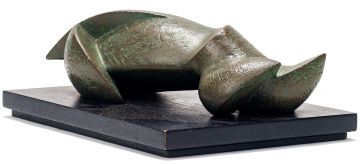Modern, Post-War and Contemporary Art and South African Fine Wine
Live Virtual Auction, 26 - 28 July 2020
Monday Evening Sale
About this Item
signed and dated 1975
Notes
The present lot is the maquette for the full-size version of the work that stands on the University of Johannesburg's Kingsway Campus. The work recalls Rodin's Burghers of Calais (1884-1889), commissioned to commemorate an event that occurred during the Hundred Years' War (1337-1453). King Edward III of England offered to lift the siege of Calais and spare the people of the city in exchange for the sacrifice of six volunteers from among their population. Ultimately the six men were also spared as a result of the intervention of Edward's queen, Philippa of Hainault, and her appeal to the king's mercy. Rodin was criticised when his work was unveiled for presenting six anxious, crest-fallen men, rather than a heroic allegory of self-sacrifice that harked back to ancient classical prototypes.
While Villa's sculpture does not depict a specific event, and political references in his work are never overt, the year in which this work was produced, 1975, was a momentous year in southern African politics and the themes of dialogue, engagement, self-sacrifice, and mercy, would have been particularly apt. The Portuguese colonial powers withdrew from Mozambique and Angola; the South African defence force invaded Angola to assist UNITA and the FNLA against the Russian-backed MPLA in the ensuing power vacuum in that country; and Rhodesian Prime Minister Ian Smith met with the UANC liberation movement's leader Bishop Abel Muzorewa in a railway coach on the Victoria Falls Bridge in a series of talks mediated by Zambian President Kenneth Kaunda and South African Prime Minister BJ Vorster.
Villa clusters the six vertical forms together and by cutting into the pipes at various levels, he enables them to tilt at 'neck' and 'waist', which imparts a universal sense of meeting, and of dialogue and engagement, as individuals and as a group. The interplay between light and shadow, and surface and negative space, animates the grouping beyond the purely formal experience of shape, form, colour and texture, and the viewer can almost hear the murmur of voices.
A tin of maintenance polish supplied by the Renzo Vignali Artistic Foundry accompanies the lot.
Literature
EP Engel (ed.) (1980) Edoardo Villa: Sculpture, Victoria: United Book Distributors, the full-size version is illustrated on pages 150 and 151.
Karel Nel, Elizabeth Burroughs and Amalie von Maltitz (eds.) (2005) Villa at 90, Johannesburg: Jonathan Ball and Shelf, the full-size version is illustrated on pages 172 and 171.
